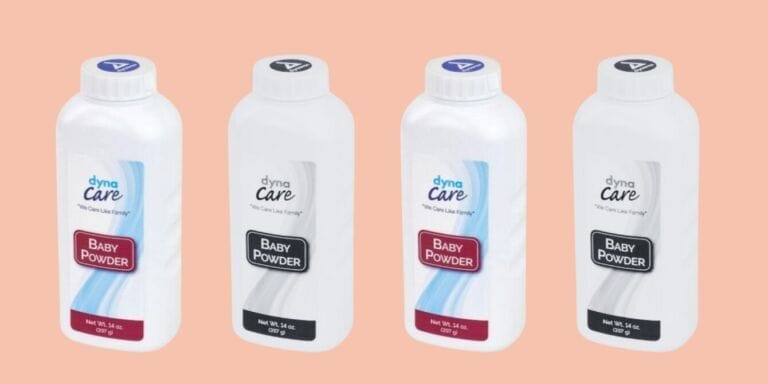Should you try to pump colostrum during pregnancy? Our midwife weighs in

ohneski/Twenty20
The advise is trending on the internet—but is it a good idea?
Table of Contents
I am often asked if there are things people can do during pregnancy to boost their milk supply before the baby arrives.
My answer is annoying: maybe.
Listen, I get it. Pregnant people that are planning to breastfeed, chestfeed or pump are usually pretty hopeful that it will go smoothly. After all, we hear so many stories about how challenging it can be, especially when it comes to our milk supply. So it makes sense that we want to do everything we can to prepare. The bad news is that often, feeding challenges are out of our control—societal issues like the lack of support for new parents can make it difficult to meet our feeding goals. Plus, physical issues like latch problems, breast structural concerns and more can come into play, as well.
The good news is that there are things you can try to help boost your milk supply while you are still pregnant—and I’ll share them in a bit. But first, we need to delve into an idea that is resurfacing around the internet: pumping or expressing colostrum during pregnancy. There’s a lot to unpack here, and it’s actually a pretty important topic, with some misinformation circulating.
Here is what you need to know about pumping colostrum during pregnancy.
First, what is colostrum?
Colostrum is the first milk that babies receive after being born. It is nicknamed “liquid gold” because it is gold in color, and because it is amazingly nutritious and awesome for babies. It is calorie-dense, filling, full of antibodies and it helps babies poop; liquid gold, indeed.
When the baby is born (whether via vaginal birth or Cesarean birth) your body will start to express colostrum. But some people start to leak colostrum during their pregnancy.
I am pregnant and not leaking colostrum—is that bad?
Nope! Whether or not you leak colostrum during pregnancy has no bearing on your future milk supply after the baby arrives.
How is a milk supply established?
(This seems off-topic, but it’s super related, promise.) In short, milk is made by a supply and demand system. The more your little boss (aka your baby) demands the more your body will supply. Every time your baby latches or you pump, hormones are released and your body gets the message that it needs to keep making milk.
Generally speaking, the more your breast/chest feed or pump, the more milk you will make.
This is why we often encourage new parents to breastfeed or chestfeed on demand—every time their baby is hungry. It is exhausting to be sure, but it helps your body to understand how much milk it needs to make to feed the baby.
Should I express colostrum during pregnancy?
Okay, so… There are a few reasons that people may want to pump colostrum during pregnancy. Some are doing so in hopes that it will boost their milk supply after the baby is born—they hope that if they start sending that message to the body early, their body might start to make more milk.
Other express colostrum during pregnancy to start building up a reserve. It is, after all, liquid gold so why not get as much of it as you can?
So in theory, expressing colostrum during pregnancy sounds like it could be a good idea. But is it? Probably not. Here’s why:
Expressing colostrum during pregnancy can be dangerous
When breasts are stimulated, they release oxytocin—this is wonderful once the baby is here since oxytocin in the “oh my gosh I love you so much” hormone.
But oxytocin is also the hormone that causes uterine contractions. The serious concern here is that if you pump or express colostrum during pregnancy, your uterus could start to contract, and you could start labor too soon—and we want to avoid this for sure.
In fact, people who are past their due date (or experiencing a slow labor) are often advised to perform nipple stimulation to get labor going (talk to your provider before attempting).
As a general rule, I do not recommend pumping or expressing colostrum during pregnancy, especially if you are experiencing a high-risk pregnancy, are at risk for pre-term labor, or are not yet full-term.
Are there situations when expressing colostrum during pregnancy is helpful?
Perhaps! This is absolutely a question you can ask your provider since they can guide you based on your situation.
For example, people with gestational diabetes may want to have some colostrum saved up to help stabilize their babies’ blood sugar right after birth. A study published in 2017 found that advising people with gestational diabetes (with otherwise low-risk pregnancies) to express colostrum starting at the 36 week-mark was not dangerous.
You also may be breast/chestfeeding an older child while you are pregnant. This is generally thought to be safe, though, of course, talk to your provider.
Are there other ways to increase your milk supply while I am pregnant?
I warned you that my answer to this question was annoyingly “maybe.” Ultimately, milk supplies are established by using that supply and demand system—feeding your baby when they are hungry and thus letting your body know it needs to make a lot of milk.
That said, there are steps you can take to optimize your health and situation. These are not guarantees; they fall into the “can’t hurt, might help” category—but hey, it could be worth a try?
Here’s what I would suggest:
1. Eat well and hydrate.
Nourish your body with healthy and delicious foods: avocados, salmon, fruits and veggies, nuts, chocolate… foods that you love, that will give you the energy that you need and maybe help your body do the important work of making milk.
And hydrate. Hydration is so important during pregnancy—it helps stave off pre-term contractions, it gives you more energy, it supports your growing baby, and maybe it will help your body to make more milk.
On a related note, keep taking your prenatal vitamin after pregnancy—your body will be working super hard to heal and make milk, and supporting it with minerals and nutrients is very helpful.
2. Set up a feeding station in your home.
Make feeding your baby as easy and comfortable as possible. Create a little nook for yourself or claim the most comfortable spot on your couch. You’ll need one-handed access to the remote, snacks (trail mix for the win) and a HUGE cup with a straw to be filled with ice water. Trust me on this one, you’ll see.
While this isn’t going to have a direct impact on your milk supply, it’s going to make the experience of feeding your baby more pleasant. And who doesn’t want that?
3. Establish your feeding team.
This is the team of people in your life who are going to support you and your baby-feeding goals. It might include your partner, family members, friends, co-workers and/or a lactation consultant or counselor.
As I said in the beginning, a huge barrier to meeting our feeding goals is our society—lack of paid parental leave, judgemental comments, unsupportive work environments and so much more. These issues need to be addressed; in the meantime, let the people closest to you know how they can help you.
Do you need your best friend to help you if a stranger comments about you feeding your baby in public?
Do you want your partner to tell you that you are doing a great job every day, or to take at least one feeding a day off of your hands?
Do you need your company to set up a pumping room for you at work?
These are all completely fair requests to make, so do not hesitate to vocalize your needs.
Remember through all of this that every day you are going to do the best you can. And as far as your baby is concerned, you are already perfect—and that has nothing to do with your colostrum.
Some of our favorite items to support you in your feeding journey.
‘The Motherly Guide to Becoming Mama’

The guide will take you from trying to conceive through the fourth trimester and infant-feeding journey (and everything in between).
Willow breastpump

Meet the pump that everyone is obsessed with. This hands-free double electric pump allows you to get on with your day while providing nourishing milk for your baby, pumping efficiently and in comfort.
Nursing and pumping bralette

A good and supportive nursing bra makes more of a difference than we can describe. And when that bra also happens to be pretty? Sign us up for a drawer full, please. The Ruby bralette is stretchy and supporting and goes up to size 50G.
We independently select and share the products we love—and may receive a commission if you choose to buy.





































